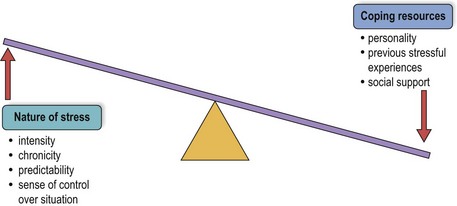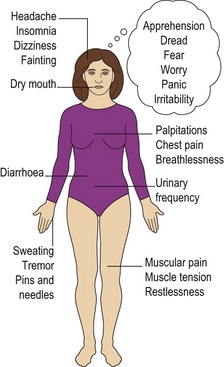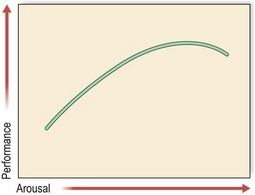Anxiety disorders – clinical presentation and aetiology
Anxiety disorders
Anxiety occurs when an individual believes that the demands of a situation are greater than their abilities to cope with it. It is a subjective and variable phenomenon, as what is stressful for one person may be stimulating and enjoyable for another (Fig. 1). The symptoms of anxiety include feelings of fear, worrying thoughts, increased alertness or arousal, activation of the autonomic nervous system and increased muscle tension (Fig. 2). This is a normal reaction to stress that prepares us to defend ourselves or escape from a threatening situation (‘fight or flight’). Of course, we are rarely confronted with stressful situations that literally require fight or flight, but anxiety can still be of value. It has been shown that we perform tasks better when more aroused, although as arousal levels increase, performance begins to decline (Fig. 3). You may be aware of this phenomenon at exam time when an overly laid-back approach is likely to be as ineffective as terror. Anxiety may be considered abnormal if it occurs in the absence of what most people would consider to be an adequate stress, or if it is so severe or long-standing that it interferes with day to day life.
Stay updated, free articles. Join our Telegram channel

Full access? Get Clinical Tree








